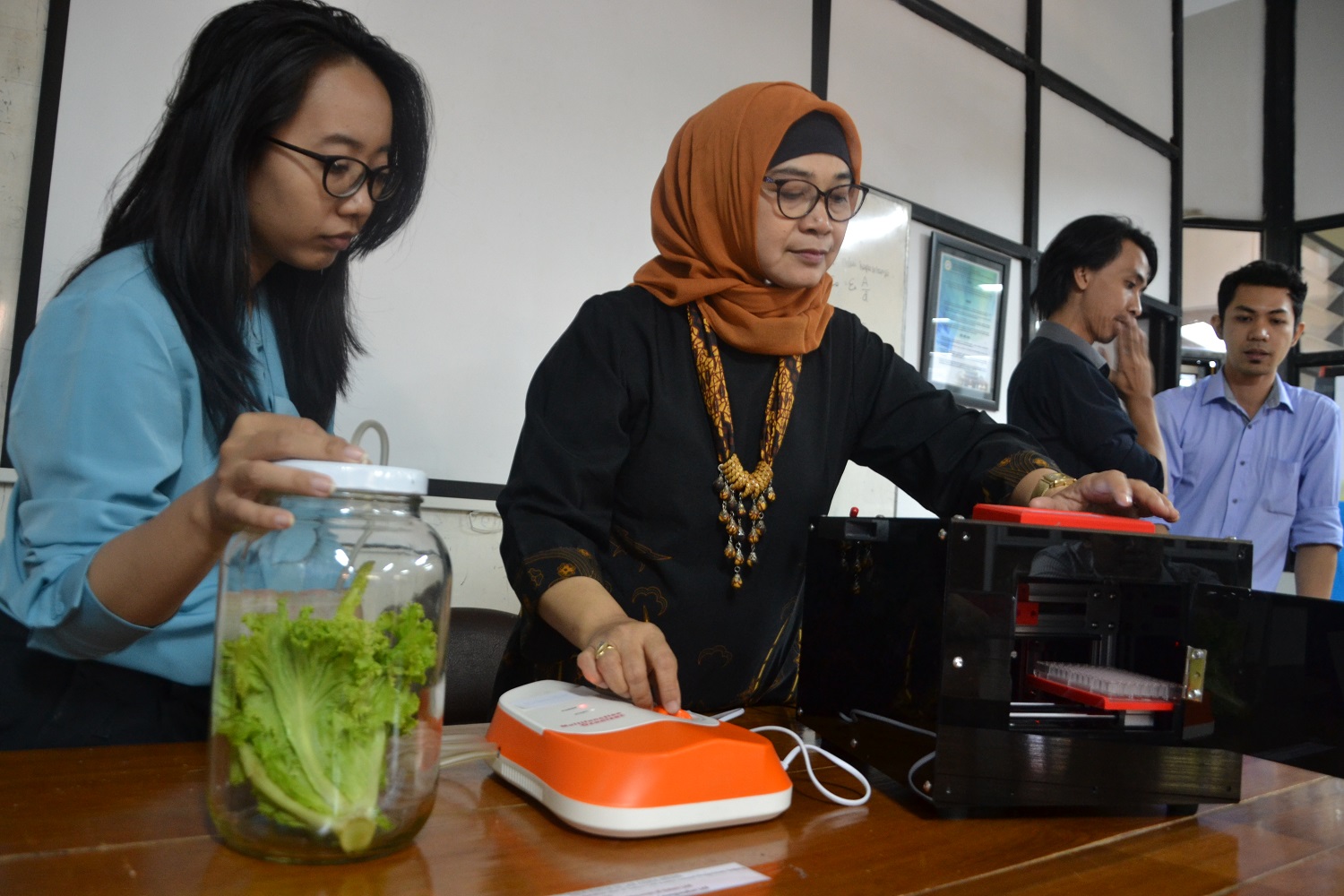UNAIR NEWS – Ozone is produced through plasma technology using both air and oxygen. Utilization of ozone at the right concentration will make ozone as a natural antioxidant, but ozone can be toxic for some living organisms at high concentration.
Ozone (O3) is a molecule consisting of three unstable oxygen atoms. Unlike other oxidizing agents, ozone is a powerful oxidizing agent that can also be a non-chemical disinfectant. The characteristics and specifications of ozone are non-toxic (non-toxic) in low concentrations, environmentally friendly, relatively harmless, and almost similar to oxygen.
Ozone can kill pathogenic microorganisms such as bacteria, viruses, and fungi. The application of ozone technology in the handling of agricultural products can shed the contamination of pesticides, bacteria, and heavy metals that stick to the surface/skin of vegetables and fruits, so it is safe for consumption for human health.
Prof. Dr. Muhammad Nur, DEA from Universitas Diponegoro (UNDIP) made innovation products based on plasma technology for food and the environment. The application of the technology developed by Dr. Suryani Dyah Astuti, M.Si., from Department of Physics at Universitas Airlangga with a team from ITS and Pharmacy UNAIR (Nike Grevika, Putri S Puspita, and Derian Faridsa) utilizing ozone to increase the effectiveness of photodynamic therapy and decontaminasisimplisia (natural ingredients used as medicines).
“Plasma technology is an innovation product from UNDIP that has been utilized for the preservation of horticultural agricultural products. Plasma is an ionized gas in an electric discharge or can be defined as a mixture of electrons, radicals, positive and negative ions. One of the products is ozone, ” she explained.
“In 2018, we will visit the plasma technology teaching industry at UNDIP. The results of the discussion with Mr. Nur gave an idea to utilize ozone from plasma technology to increase the effectiveness of the photodynamic therapy (PDT) method. The application of PDT method is one example of therapy used in the health field, namely healing wounds due to microbial infections. Besides, ozone can also be used for biofilm reduction, sterilization, and decontamination of food and medicine, “she added.
Utilization of Ozone for Health
One use of ozone technology is to increase the effectiveness of biofilm reduction in antimicrobial photodynamic therapy. This investigation targets microorganisms in the biofilm phase.
Dr. Dyah said that bacteria cause chronic infectious diseases in humans are generally able to form biofilms.
“Biofilm is a cell community of microorganisms that are structured, conjoin, and produce polymer matrices that will attach to biological surfaces and inanimate objects. Furthermore, biofilms are resistance to antibiotic agents, “explained Dyah.
“Therapy using antibiotic agents will only kill microorganism cells in faseplanktonic (which swim outside the biofilm) while the form of bacteria that are tightly arranged in the biofilm will stay alive and develop and will release planktonic cells and improve again. Thus, infections caused by the growth of microorganisms in the biofilm phase become challenging to treat, ” she added.
In principle, PDT uses three main ingredients, namely light, photosensitizer, and oxygen. The ozone used to increase the efficiency of PDT is expected to increase oxygen production during therapy because the lack of oxygen occurs at the base of biofilms (where microorganism cells gather). With the availability of ozone, the photosensitization mechanism will occur.
Research result
Ozone application for photodynamic therapy has two stages of research: pre-clinical (in vitro and in vivo) and clinical. In vitro stage, research carried out using ozone has been published in international journal of Biomedical Photonics because ozone is toxic; the concentration needs to be adjusted, so patients are safe during therapy.
In vivo stage, ozone is exposed directly to experimental animals with low concentration wound models. The results of the study concluded the use of ozone could increase the effectiveness of biofilm reduction about 80 percent higher when compared to using lasers alone (60 percent).
At clinical stage, the method was applied for healing wounds caused by bacterial / biofilm infections. The results showed the effectiveness of ozone and PDT to treat wound infections.
Ozone Utilization for Simplisia decontamination
Dr. Dyah added ozone could also be used to decontaminate medicinal ingredients and Simplicia. Decontamination is an effort to reduce and or eliminate contamination by microorganisms.
Moreover, there are a lot of Indonesians who consume herbal medicines. The improper cleaning and storage of herbal medicines cause the material to be easily contaminated by microorganisms such as bacteria, mold, and yeast, making it unfit for consumption.
The results showed the effectiveness of ozone dosage 7 mg / l as decontaminant Simplicia Java chilli (Piper retrofractumVahl) and ozone dose 6 mg / l for Javanese chilli simplexia powder with the ability to reduce ALT (Total Plate Number) and AKK (Yeast Fertilizer Rate) by 90 percent.
With this research, Dr. Dyah hopes to produce innovation-based works that can be utilized by the community with good quality and affordable prices.
“In Indonesia, the dominance of imported medical devices is massive. The government is trying to limit the import of medical devices and support domestic medical devices products. We want to develop local medical devices from existing components. In my opinion, innovation can be started from simple things; further development will produce excellent products, and it can be utilized by the community, “she concluded.
Author: Asthesia Dhea C.
Editor: Binti Q. Masruroh





